15 Of The Best ESL Speaking Games And Activities.
For English language learners speaking is probably one of the most important and most feared language skills they have to learn. They may be shy, in both languages, or they may be afraid of making a mistake in front of their friends or classmates.
One of the best ways to overcome this is to use English games and activities, introduce some fun into the lessons and these fears suddenly become less important.
We have been teaching English for a lot of years and here are 15 of the best English Speaking games and activities we have researched and trialed in our classrooms. They have been massively useful to us over the years, so we hope they are for you as well.
We have researched English Speaking Games for all levels, backgrounds and ages of students. Activities like the ”Yes/No game. Call My Bluff, On Call” can all be scaled to address student needs. Utilizing speaking games for students is a proven way of maximizing participation and retention of language.
It is important to try to over come students initial fears of speaking, No one likes to make mistakes or look foolish so creating a risk free and non judgmental environment in your classroom is vitally important.
I often try to speak in the students first language to show them that of course people make mistakes, and that is perfectly acceptable, of course some times funny, and nothing NOTHING to worry about!
This is a more difficult task with adult learners, but still achievable highlighting their motivations for learning the language and how it can benefit them at the beginning of sessions helps with this, especially if you go on to highlight how speaking is going to be the most important skill in the vas majority of these situations. In careers, social occasions and travel.
Speaking is the most important skill they will learn. One thing both younger and older students have in common? We all like to have fun. These speaking games below can all be adapted to suit either a Kindergarten classroom, ESL or otherwise, or a boardroom training session. There is something for every classroom situation.
Also where we have them on our site we will link to the files for you to download to make it more convenient for you. If you want to jump to a specific game just click on the list below.
Just before we jump into these 17 ESL Reading Games and Activities we have the four skills covered on the site. Speaking, Reading, Writing and Listening.
You can access the pages from the links below or click on the image to download them all in one PDF file for $2.99 or the price of a coffee (a good one we admit!)
- The Best ESL Listening Games and Activities.
- The Best ESL Speaking Games and Activities.
- The Best ESL Writing Games and Activities.
- The Best ESL Reading Games and Activities.
English Speaking Games and Activities
- 30 Second Speech
- Logic Game – Downing Street
- ESL Directions Game
- Speaking Activities – Expressions
- Speaking Activities – Responses
- Mallets Mallet – Word Association Speaking Game
- Make a Wish – Speaking Game
- YES / NO Speaking Game.
- Pictionary – English Speaking Game
- Guess Who
- Call My Bluff / Would I lie to you
- Doctors In
- Show and Tell
- Taboo
- Think Fast
1. 30 Second Speech
This English speaking activity is both fun and useful. The aim is to get students to speak for 30 seconds about topics that may or may not be out of their comfort zone. We have a list of topics here for you to choose from, and of course you can think of your own.
There are two ways to approach this, you can introduce the task by asking them to work individually first, or move straight onto the game below.
- Introduce the idea to the group and say that we will be focusing more and more on their speaking and presenting skills and that this lesson will be a bit of fun and good practice.
- Ask how long 30 seconds is…. Is it a long time? (Relative of course!)
- Say that they are going to be talking for 30 seconds about something they know about and that they have only 1 minute to prepare.
- You can work your way around the class, or split your class into teams to do this depending on
- Work your way round they class giving people a go at trying to speak for 30 seconds.
The 30 Second Speech game
As they practice the task above write the rules on the board and split class in half
- 1) Pick a subject
- 2) Talk for 30 seconds
- 3) No hesitation or repetition ( although of course they are learning so be lenient with this!)
- 4) If you can’t talk for 30 seconds the other team will get a chance to finish your time.
- 5) If they can finish the time they will get the points instead.
Adaptations:
- You can change the amount of time depending on the age and abilities of your students.
- You can choose topics that will appeal to your students, if professional students you can choose topics from their careers for example.
- To do this with varying abilities it is possible to change all aspects. From length of time speaking to the topics chosen.
- you can work as teams and make it competitive or run it as a whole class activity.

2. Logic Speaking Lesson – Downing Street
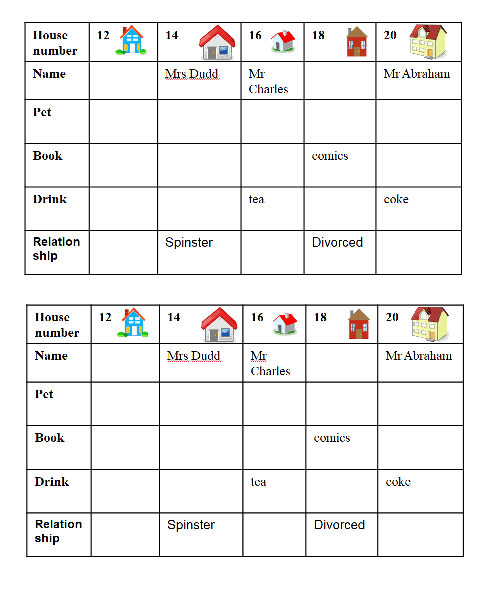
These type of activities used to be in puzzle magazines all the time. There sis a fair deal of explaining required to them but basically it s a logical fill in the blanks. It is better suited to higher level students, but its a great English Speaking game when adapted properly.
We have a separate page for the full details, and it is in this speaking exercise book ( free download) but will highlight the basics here to see if it is something that fits your teaching needs.
The aim is to fill in the table with all the information so you know everything about the residents of Downing street. However you have to walk around and ask the rest of the class for that information, only once you have spoken to everyone will you be able to work it out . This is a great English speaking game that gets the whole class taking to each other, and forgetting about the language they are doing that in!
You will need the table worksheet for students to fill in and the list of information and clues both on the links includes here
- Pass out one clue and a table worksheet to fill in to each Student.
- If you have fewer than 20 participants, give each person more than one clue until you run out.
- If you have more than 20 students, cut up more than one copy of each and pass out duplicates to the group
- Do not let participants read each other’s clues.
- As they get the information they can start to fill in their table.
- They must speak and listen to identify, as a group, what they learn from each clue.
- The teachers role is to make sure they are speaking English and to point in the right direction if it gets a little confusing.
Once your students have the answers then it can be gone through together on the board or white board and it adds another speaking element to the lesson. This is a great speaking game for ESL students and other. It really encourages them to speak to each other. As an added bonus for teachers we get to act as facilitator rather than be stuck at the front of the classroom.
Adaptations: It is possible to add clues (carefully to make sure they fit the answers) doing this makes it much easier. The aim is to get the students speaking to each other not just the logic side of the activity.
3. Giving Directions Lesson plan
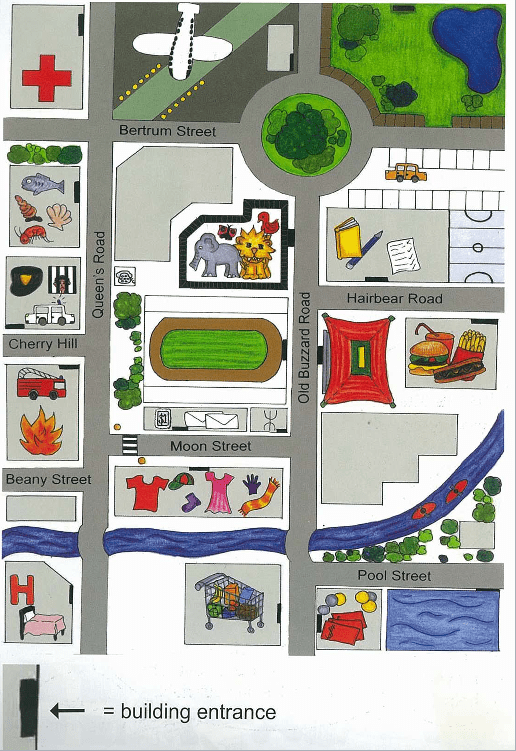
Ask and respond activities give students the comfort of a script to follow, which means those who are a little self conscious have some scaffolding to work from. It also means these activities are suitable for lower level students who need that extra help
Resources •A copy of a town map, or any town map printable from google for groups of students, a list of place names for students to pick from. We have one designed for younger learners here.
The activity.
- Chose a student from each team (make three teams if you can.) who will come to the front and pick a place to start from the bag and then will pick a place to finish.
- The students mentions the start building and then has to give directions to their team.
- His/her team has to follow as they describe the directions (obviously they cant say the name of the place or the building that they are supposed to go.) If the team has it right they get points.
- You can pre teach turn left, straight on, turn right as needed of course.
- Offer points as you see fit for each team
- Make sure as many get a chance to come to the front and speak as possible.
Adaptations:
It is possible to actually have the directions already prewritten for students. This means they can practice reading, speaking and listening in one activity.
Also it is possible to have your class spend a lesson coming up with the directions themselves and then putting them all in a box or bag at the front for the whole class to use. This means you add writing and they are actually using their own work to prepare a lesson.
4. Speaking lessons – Expressions
One of the main problems when teacher oral English speaking lessons is that the class invariably turns into robots. This is not intentional, so much effort goes into speaking in another language that putting emotion and expression into what they are saying comes way , WAY down the list.
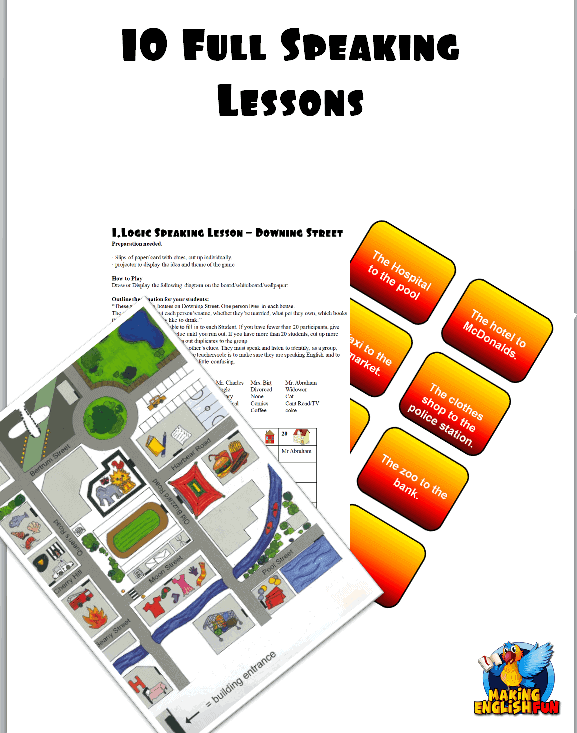
So sometimes a little nudge in the right direction is all they need. We have designed an ESL speaking game and lesson to do just that.
- We have a worksheet we have prepared for you with some sentences that will require a lot of expression.
- Write the word expression on the board and ask what is says and what it means
- Explain that although this word can mean making your voice have feeling or emotion, it is also your facial expressions.
- Show them what a voice without expression sounds like (you tube most boring voice in the world or something) or demonstrate yourself.. Let them know intonation and expression are SO important in English that they should try to think about them more.
- Give out the work sheet with examples of sentences on and see let them work out how they should say each sentence to make it more natural.
- Father TED Video here is a reasonable example of boring and dramatic voice. ( there is a bra in it in the first 5 seconds so set it up first if it is likely to cause problems )
- Remind them to try to use not only expression in their voice but in their face as well. Demonstrate how difficult it is to sound sad when you look happy and that by using facial expression it actually makes speaking English easier!
- Have the group work through the sayings and ask them to perform them together.
- As a fun activity write something random on the board (I like peas, where is my pen, I have won the lottery) and have emotions and feelings written on the board. Choose a student number and have them say a phrase normally and then point at a different emotion and see if they can say it like that. If you want to make it a competition see if the rest of the class can work out what emotion they are trying to act out.
- E.g.: Sad but won the lottery, happy but lost their pen etc.
Adding expression to their speech is a large step towards sounding natural and developing English fluency.
5. Responses Lesson
In English to sound more natural we have a set of almost automatic set of responses on hearing good, bad or surprising news. It doesn’t take much to teach these in ESL Speaking lessons and for ESL Students in particular it is a definite confidence builder for them.
- Greet the class and walk around offering compliments to people, you look nice; I like your hair, nice shirt…etc. See what responses you get from this.
- Write RESPONSES on the board and see if they have seen the word and if they can tell you what it means. Write up congratulations on the board and ask when they would say this. Illicit ideas from the group.
- Repeat but with my cute little rabbit died yesterday and see what they think the correct response should be.
- Give out the worksheet and ask them to work in pairs to see if they can write the correct response to the appropriate sentence. Give them a couple of minutes to do this. Longer if needed. Then choose a student to say one and another student / group to try to give the answer. Work through them all.
- Give life to the responses and let them know if they say sorry their voice has to mean it otherwise it might sound sarcastic. Same with congratulations etc. So expression is very important in English to make sure the correct meaning is conveyed!
- There are two spaces at the bottom for two sentences for them to write a sentence and then the appropriate response.
As a game you can then repeat the same sort or exercise as the activity above. Have a selection of sentences than usually require a response and then ask for the incorrect response. No one expects you to say congratulations when you tell them your little rabbits died yesterday!!!

6. Word Association Speaking Game
This English Speaking game, together with the YES/NO game below are tied for my favorite game to play with any age student ESL or other wise. They can, and have been, played with second language kindergarten students all the way up to native speaking business people with the same amount of fun. The language from the business people was perhaps a little ruder than the kindergarten children but only a little!
It is a superb English speaking game for ESL students and native speakers. It gets really REALLY competitive. you will need an inflatable hammer they have packs of 12 on amazon for about 12 dollars and that’s it!
This game is based on a old TV show from the UK called Wacaday. In it they had a rather colorful character called Timmy Mallet who, among other things, played a game called mallets mallet. In this game the players, always children, had to think of a word associated with whatever Timmy said. There was no hesitation, repetition, or ummm or errrrrs allowed or they got a bonk on the head. (softly of course) the winner was the one who didn’t get hit!
This is easier to show you than explain so here is a video of it! ( it was the 1980s so excuse the poor quality of the video, and of course the hair styles!)
Two students at a time come to the front and the teacher/helper gives them a word. They have to say a word related to the previous word in 3 seconds or less. They can not repeat, pause or say something unrelated.
If they get it wrong they get a ‘bonk’ on the head and 3 times bonked and a new pair or students comes up or you could even play winner stays on. For fun they can play against the teacher as well.
Here are some ideas.
- Fruit
- Animal
- Country
- Teacher
- School
- Hobbies
- MacDonald’s
- Pencil
Water, drink, tea, coffee, sugar, sweet, sour …..
Adaptations:
You can make this much slower than the video if you are working with second language or ESL students, and if you don’t want a hammer you can use a rolled up piece of paper or just play it as a point game without the hammer. (its more fun with one of course!)
7. Wish Speaking and Writing lesson.
This is a take on the TV Show Call my Bluff, where contestants have to guess who is lying. In this version students have to guess who wishes / wants what. They can do this by picking and reading a wish out of the bag and then trying to guess who it belongs to. They hav to give a reason why they think that.
Note: I have done this, or a version of this, many times without issue. However there was one time when a student wrote that they wished their parents would get back together which was pretty heartbreaking. Although it is superb to share, in front of a class of other students may not be the time or place. I did of course talk to her after and sought some help from others in the school. It may be worth while including instructions to keep it light.
- I do this by telling the class that i am not their teacher now, I am the genie from Aladdin and that I am going to give them three wishes, but one has to be to make the world a better place, one has to be for their family or friends and the last one can be for them. (And it can’t be I will have x more wishes)
- Give out some scrap paper and let them have a few mins to think about it then they have to write the wishes down but no names.
- Once completed say that we are going to have an activity. The class will have to guess whose wishes are whose.
- You will have three people at the front and need to mix up the pieces of paper. then hand them back to the students. Maybe they are mixed maybe they are not.
- One student at a time will read one of the lists of wishes and the rest of the class have to guess who they think the wishes belong to.
- You can continue till all the students have had a try.
Adaptations: This is also great as an Icebreaker activity for students and teacher to get to know each other. You can keep the activity as wishes or ask them to write three things about themselves. You can even change it to two things true and one lie to add some fun and creativity. ( and to create another English Speaking game called ”would I lie to you” or Call my Bluff.
8. Yes – No Game – Speaking Lesson
When I said that The Word Association game above and this game were tied as my favorite English Speaking game I lied. This is my number one game. It is just perfect for all levels of English learner. It can be made easier for younger and ESL students and learners and more difficult for higher levels. No matter what level of learner is in the class you can use this game.
Now watch the video to see someone very VERY good at asking the questions in action. (these are native speakers so of course he tries very hard to catch them out and speaks very quickly)
It is better to teacher this to students with at least a basic abilty, but it doesnt have to be high level as you can level the wuestion you ask.
Write up questions on the board and say that today we are going to look at question that are answered with yes/no. .
- The yes no game is from a TV show around the world, people have to come out and answer the questions the teacher (at first) asks. These will nearly all be yes or no questions.
- The student must not answer with yes or no, or nod their head or shake their head, or say uh huh etc etc.
- It sounds easy, but it isn’t!
- They will get carried away with this so take time to calm them down between students, and it is excellent practice for adding language to answers.
- Once they have the hang of it students can also be brought up to ask the questions. The activity then becomes student led and the teacher can observe and advise.
Tips: Ask questions starting with do you, can you , will you etc usually catch students out. Also you can repeat the students answer and add yes, or no to the end and it might catch them out to nod or repeat you.
It is simply awesome to play this and as I said earlier even 5 and 6 year olds quickly grasp this English speaking game. Once i have played it with my students it is the most requested speaking game every lesson following that.
9. Pictionary – English Speaking Game.
Allowing your students to communicate with each other takes off some of the pressure of a whole class environment and allows them to risk take with their English speaking in a less public arena
In this game, each student in the pair draws a picture, keeping their paper shielded from the eyes of their partner. Ideally, pictures should be fairly simple. Once the picture is complete, they explain to their partner, using words only, how to replicate the image this can be done at a desk or as a whispers type activity across school halls if you want a more physical speaking game.
For example, if a student has drawn the stereotypical square house with a triangle roof, he might say: “draw a house, with a red roof and blue door. He may miss out how many windows, the family in front of it or all manner of details.
This allows the teacher to compare the two drawings with the students and ask what language they could have added to get more details into the picture. This really enables students to start to think about expanding and adding to the phrases they say.
The goal of this game is for each partner to replicate the other’s drawing by listening and understanding these spoken directions. The difference in drawings is often pretty funny as well.

10. Guess who
Although you can use the Guess Who board game if you have it, its about 15 USD on Amazon if you have a need! It is probably easier and more adaptable for the culture or location you are teaching in to make a simple version with famous people from your area.
Students simpley draw the name of a famous person and photo if needed out of a hat (you’ll need to prepare these slips in advance!) and their partner or the rest of the class tries to guess who is on the paper by asking a series of yes/no questions.
it is a fun and engaging English speaking game that tests questioning knowledge.
11. Call My Bluff / Two Truths and A Lie
This is a similar game to the Make a Wish game above, but Call My Bluff is a more difficult and fun game which is perfect at the start of term as a ‘getting to know you’ kind of game. It is also a brilliant ice breaker between students if you teach classes who do not know one another — and especially essential if you are teaching a small class size.
The game is excellent for practicing English speaking skills, though make sure you save some time for after the game to comment on any mistakes students may have made during the game. (I generally like to reserve this for after the game, so you don’t disrupt their fluency by correcting them as they speak).
With older groups you can have some real fun and you might be surprised what you’ll learn about some of your students when playing this particular EFL game.
- Why use it? Ice-breaker; Speaking skills
- Who it’s best for: Appropriate for all levels and ages but best with older groups
How to play:
- Write 3 statements about yourself on the board, two of which should be lies and one which should be true.
- Allow your students to ask you questions about each statement and then guess which one is the truth. You might want to practice your poker face before starting this game!
- If they guess correctly then they win.
- Extension: Give students time to write their own two truths and one lie.
- Pair them up and have them play again, this time with their list, with their new partner. If you want to really extend the game and give students even more time to practice their speaking/listening skills, rotate partners or run as a whole class activity.
- Bring the whole class back together and have students announce one new thing they learned about another student as a recap
12. Doctors In

Actually this stems for a party (or drinking) game at universities and can be adapted to what ever vocabulary or topic you are teaching at the time. In the university version we all stick a post it to our foreheads and have to guess the famous person we are. Similar to the Guess who game above. In ESL or Classroom use we can do this with Jobs, animals, furniture, absolutely anything all you need are some post its or similar to stick to peoples heads or backs – anywhere they can not read it. It is a great ESL speaking game for classrooms with limited resources.
How to play:
- Write the terms, problems or vocabulary you want on to Post It Notes and stick to the students back.
- The Students must walk about asking questions of their students on the word, yes and no questions work better, but longer ones can be used.
- Hopefully Students will be able to get enough information to guess what their word is.
- This game can be adapted for old or young students, or even university students 😉
13. Show and Tell
This classic classroom activity still has a place in modern classrooms. Students simply bring in something they would like to Show and Tell to their classmates. It practices students speaking ability, and their ability to prepare short written scripts that they will have to read. For those not talking it practices their listening ability, especially if you add a could of quiz questions at the end of each show and tell part.
You can change this by having a mystery box and they have to describe the item with out looking to their classmates and have them try to guess ( or the student of course) what it is.
14. Taboo
Maybe its because i am writing this just a couple of days after Christmas, but I notice there are a lot of party games in this list. It might be that, but it might also be because they just work. Everyone, young and old, likes to have fun and these games provide that in abundance. Taboo is no exception.
It is simply a deck of cards, you can make your own or pick up a glossy set on Amazon for not much. On the card they have one target word and four words underneath. The player, in one minute or what ever time limit you decide to set has to try to explain what the target word is with out mentioning it, or the four related words underneath.
The beauty of this game is that you can adapt it to whichever topic you have been studying and make it easier or more difficult depending on the age and abilities of your students. It works in ESL and native speaking classrooms.

15. Think Fast
This is a nice physical game for warm up or for end of class consolidation. You just need a bean bag and some ideas.
It is similar to the Mallets Mallet Word assocation game above but involves the who class rather than pairs at the front.
- First have your students stand facing each other in a circle, or as much of one as you can make if you are in a classroom.
- Then explain that you are going to say a topic, maybe animals, or colors anything.
- When you do you are going to throw the ben bag or ball at a student ( to catch not hurt!) and when they catch they have to then say something in that topic,
- Then throw the ball on to another student in the circle.
- That student has to do the same, but it has to be a different word. If they get it wrong, pause or repeat they have to sit down and wait fo the next round.
This is great fun and students of ALL ages get into it very quickly. You can also allow then to pick their own subjects after a few goes.
You can access the pages from the links below or click on the image to download them all in one PDF file for $2.99 or the price of a coffee (a good one we admit!)
- The Best ESL Listening Games and Activities.
- The Best ESL Speaking Games and Activities.
- The Best ESL Writing Games and Activities.
- The Best ESL Reading Games and Activities.
The simple fact is that students of all ages learn better when they are having fun. If you can try to incorporate some of these English Speaking games and activities into your lessons then you will find that more and more your students are willing to engage and practice the language you are teaching them. There are hundreds more activities, but these are our favorites. We have a booklet of ten of them for free download if you want an idea of some of the resources behind them, but we will also be putting them up on the site as time goes by so you can take them individually as you need.
Hope these helped you as much as they have helped us!

Hi I’m Marc. A teacher of over 15 years, English, General Studies and Outdoor Education. Thought it was about time to sharing both what I have learnt during that time and the resources I have put together. On this site we aim to teach the theory and share our thoughts, but also go that one step further and give you access to the hard resources you need for your class or for you children



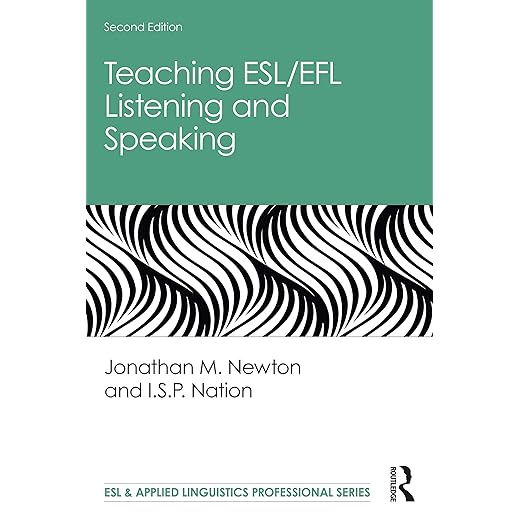



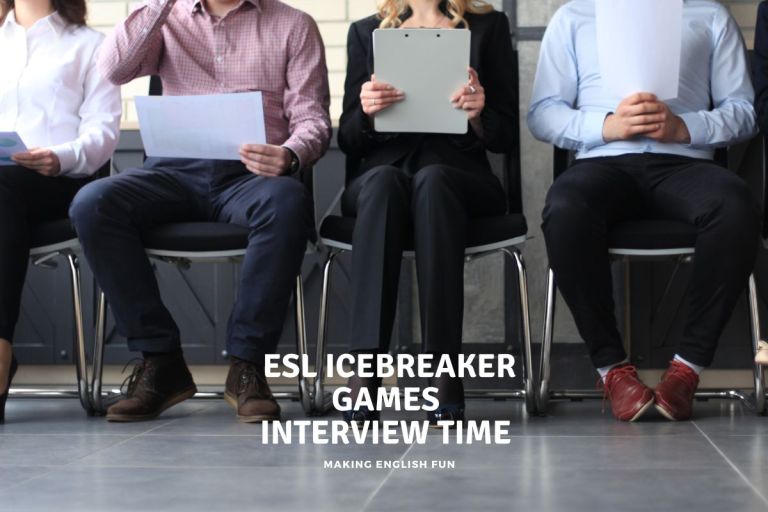

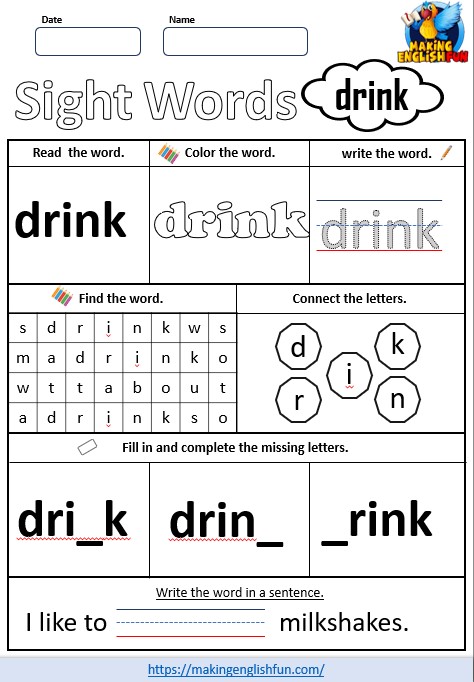
4 Comments